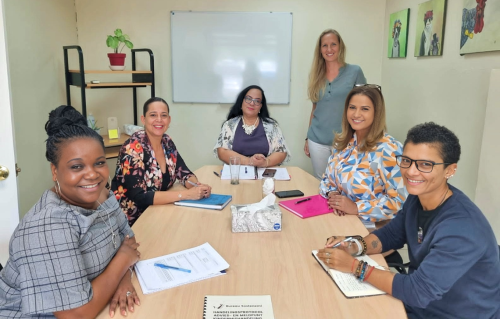 PHILIPSBURG:--- The Court of Guardianship Sint Maarten, with the technical support of UNICEF the Netherlands, is working towards implementing a ‘child safety code’ (official name to be determined), which is in line with Article 243d of the Civil Code of Sint Maarten. Once implemented, the code will serve as a guideline for professionals to ensure the rapid detection of possible child abuse to provide support to the child and family. In addition, the code will help ensure that reports of suspected child abuse in Sint Maarten are better streamlined between all relevant departments, such as the Court of Guardianship, Police Department, SJIS, schools, medical centers, and other institutions that offer family services.
PHILIPSBURG:--- The Court of Guardianship Sint Maarten, with the technical support of UNICEF the Netherlands, is working towards implementing a ‘child safety code’ (official name to be determined), which is in line with Article 243d of the Civil Code of Sint Maarten. Once implemented, the code will serve as a guideline for professionals to ensure the rapid detection of possible child abuse to provide support to the child and family. In addition, the code will help ensure that reports of suspected child abuse in Sint Maarten are better streamlined between all relevant departments, such as the Court of Guardianship, Police Department, SJIS, schools, medical centers, and other institutions that offer family services.
“The success of the child safety code and related programs relies heavily on the cooperation between these institutions. Teachers, police officers, medical personnel, and other child-care professionals are often the first to be able to detect signs of suspected child abuse. They, therefore, also have a responsibility to offer the much-needed emotional support to children in those difficult situations or report when necessary,” explains Neidi de Carvalho, Child Protection Specialist for UNICEF the Netherlands.
Aside from establishing the legal frameworks and working agreements between relevant parties to implement the child safety code, the Court of Guardianship and UNICEF in the Netherlands are also rolling out supporting programs. These programs include Child Check and Handle with Care, which strengthen the identification, reporting, and follow-up of suspected child abuse cases on Sint Maarten – especially in institutions that work with children or parents.
“During consultations with relevant stakeholders, many professionals indicated that the communication between departments and follow-up related to suspected child abuse cases needs to be improved. The child safety code, Handle with Care, and Child Check, will offer a more efficient and reliable system for reporting. Our top priority is to work towards a safer Sint Maarten for all children by enhancing collaborations and introducing uniform procedures for all professionals,” explains Kimberly Dort-Brown, Head of the Court of Guardianship.
Last year, in Aruba, the Departamento di Mucha y Hoben/Department of Youth and Family Affairs (DMH) implemented its own ‘Codigo Di Proteccion’. To learn from this process, Mrs. Dort-Brown, on behalf of the Court of Guardianship, and Ms. de Carvalho, on behalf of UNICEF the Netherlands, attended a 4-day working visit to Aruba. Their visit was curated by the DMH, whose specialists elaborated on the overall implementation and sustainability of the ‘Codigo Di Proteccion’ in Aruba.
Several other institutions that play a role in the execution of the child safety code in Aruba were also visited, including the KPA (Korps Politie Aruba, Stichting Katholiek Onderwijs Aruba, Bureau Sostenemi (Child Abuse and Neglect Reporting, University of Aruba, DVR (Directie Voogdijraad), Dr. Horacio Hospital & ‘Telefon pa Hubentud’ (Youth Helpline), amongst others.
The main objective for the visit was to gain knowledge, best practices, advice, and inspiration regarding the process, procedures, workflow, legal framework, and implementation phase from the beginning to where Aruba currently stands. The gathered insights will assist in developing and implementing the child safety code on Sint Maarten. “I’d like to thank the Departamento di Mucha y Hoben and their partners for their assistance in facilitating a successful working visit to Aruba,” concludes Dort-Brown.
This activity is part of the Child Resilience and Protection Project (CRPP) executed by UNICEF the Netherlands in collaboration with the Government of Sint Maarten, financed by the Government of The Netherlands, through the Sint Maarten Trust Fund, managed by the World Bank.









